Fire alarm systems are essential in the protection of lives and properties against fire hazards. A properly installed and maintained fire alarm system can greatly reduce the risk of serious damage caused by fires. It is designed to detect smoke, heat, or fire and notify the occupants of potential danger through audible and visual alarms. In this guide, we will discuss how to wire fire alarm system properly.
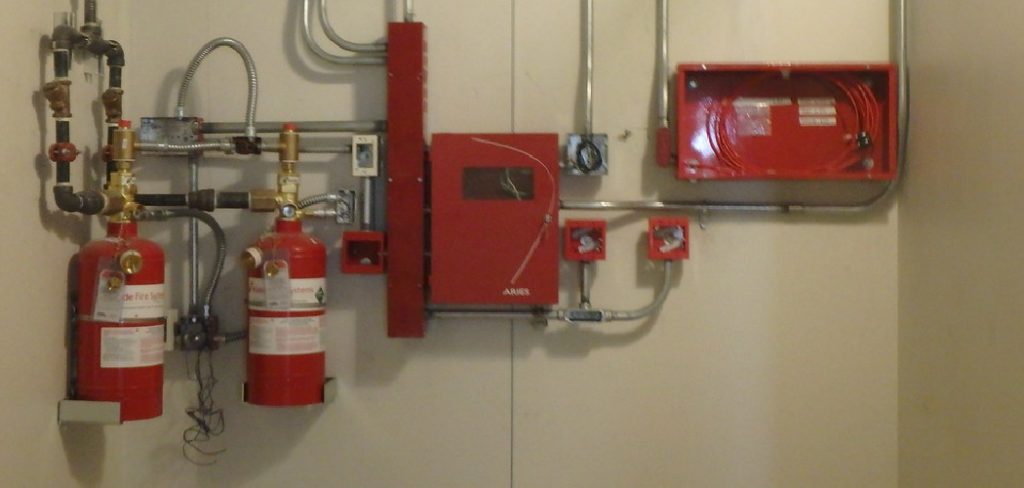
Necessary Items
Before starting the wiring process, it is necessary to gather all the required items. These include:
- Fire alarm control panel (FACP)
- Smoke detectors
- Heat detectors
- Pull stations
- Horn strobes or bells
- Conduit and wire for connections
Make sure to purchase these items from a reputable supplier and check their compatibility with each other.
Why Use a Fire Alarm System?
A fire alarm system is crucial for the safety of the building’s occupants and immediate response to a fire. It provides early detection, which can prevent serious damage or loss of life. Additionally, it can also help in notifying emergency services for prompt action.
Also, in some countries, a functional fire alarm system is required by law for certain types of buildings. There are two main types of fire alarm systems: conventional and addressable. Conventional fire alarm systems have zones that cover specific areas of the building.
When a detector within a zone detects smoke or heat, the corresponding zone will be identified on the control panel. On the other hand, addressable fire alarm systems have individual addresses for each detector, allowing for more precise identification of the location of the fire.
8 Things to Know Before You Start
1) Understanding the Components of a Fire Alarm System
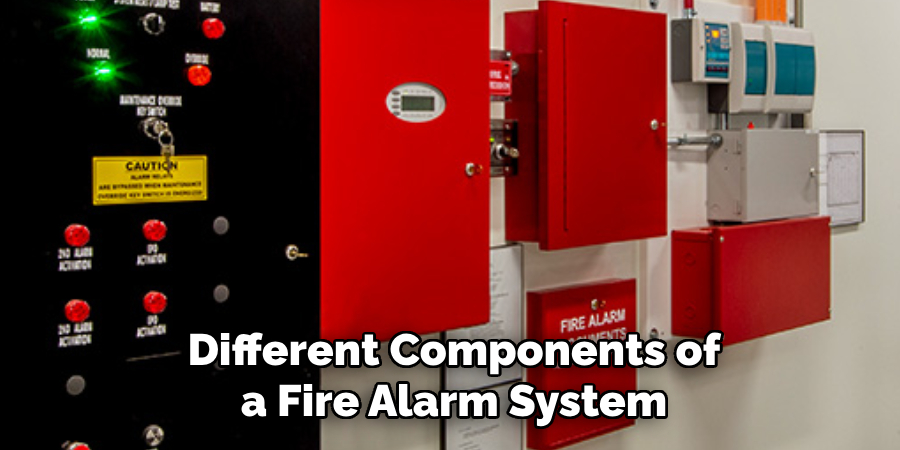
Before we dive into the wiring process, it is crucial to have a basic understanding of the different components of a fire alarm system. These include the control panel, initiating devices (such as smoke detectors and heat detectors), notification appliances (like horns and strobes), and backup power supply.
2) Familiarizing with Local Codes and Regulations
Every state or country has its own set of codes and regulations for fire alarm systems. It is essential to familiarize yourself with these rules before starting the wiring process. This will help ensure that your system is up to code and passes any necessary inspections.
3) Planning the Layout
Before starting the wiring, it is important to plan out the layout of your fire alarm system. This includes determining the locations of all initiating devices and notification appliances, as well as the route for the wiring. Consider factors such as accessibility, aesthetics, and potential obstructions when planning the layout.
4) Using Proper Wiring Techniques
When wiring a fire alarm system, it is vital to use proper techniques to ensure the system functions correctly. This includes using appropriate wire sizes for different components and properly grounding all connections.
5) Labeling the Wires and Connections
To avoid confusion and potential errors, it is crucial to label all wires and connections accurately. This will help during installation, maintenance, and troubleshooting processes. And in case of any necessary repairs or replacements, it will be easier to identify the right wire and connection.
6) Testing the System

After completing the wiring process, it is crucial to test the system thoroughly. This includes testing all initiating devices and notification appliances to ensure they are functioning correctly. It is also important to conduct regular tests and maintenance checks on your fire alarm system to keep it in proper working condition.
7) Hiring a Professional, if Necessary
Wiring a fire alarm system can be complex and requires technical knowledge. If you are not confident in your abilities, it is best to hire a professional electrician or technician with experience in installing fire alarm systems.
8) Keeping Records
It is essential to keep detailed records of all installations, tests, and maintenance checks for your fire alarm system. These records can be helpful in case of any issues or inspections in the future.
Properly wiring a fire alarm system is crucial for ensuring the safety and protection of occupants in a building. By following the necessary steps and guidelines on how to wire fire alarm system, you can install an effective fire alarm system that will offer peace of mind and potentially save lives.
Remember to always prioritize safety and follow all local codes and regulations when working on any electrical systems. With proper planning, knowledge, and techniques, you can successfully wire a fire alarm system in no time.
12 Steps on How to Wire Fire Alarm System
Step 1: Turn off the Power
Before starting any electrical work, it is essential to turn off the power supply to the area where you will be working. This will help prevent any accidents or injuries. In the case of a fire alarm system, it will ensure that there are no false alarms during the installation process.
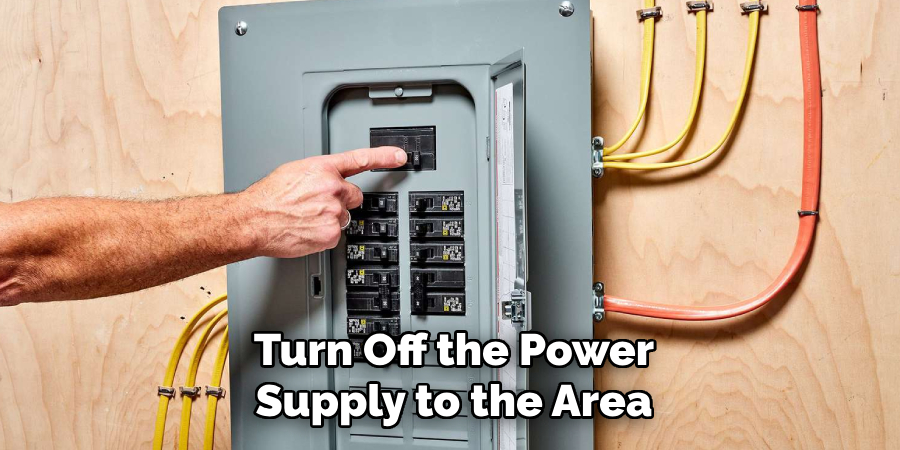
Step 2: Mount the Control Panel
The control panel is the brain of your fire alarm system and should be mounted in a central location with easy access. Follow the manufacturer’s instructions for proper installation and mounting techniques.
Step 3: Install Initiating Devices
Initiating devices, such as smoke detectors and heat detectors, should be installed in strategic locations throughout the building. Place them on the ceiling or walls following the manufacturer’s instructions for proper spacing and placement.
Step 4: Connect Initiating Devices to Control Panel
Using appropriate wire sizes, connect all initiating devices to the control panel according to their designated zones. Zones help identify the location of any activated device in case of an alarm.
Step 5: Install Notification Appliances
Notification appliances, such as horns and strobes, should be installed in locations that are easily visible and audible to all occupants. Follow manufacturer’s instructions for proper spacing and placement.
Step 6: Connect Notification Appliances to Control Panel
Using appropriate wire sizes, connect all notification appliances to the control panel according to their designated zones. This will ensure that the correct alarm sounds when an initiating device is activated.
Step 7: Install Pull Stations
Pull stations should be installed in easily accessible locations, usually near exits or fire extinguishers. Follow manufacturer’s instructions for proper placement and installation techniques.

Step 8: Connect Pull Stations to the Control Panel
Using appropriate wire sizes, connect pull stations to the control panel according to their designated zones. This will allow occupants in an emergency situation to manually activate the fire alarm.
Step 9: Install Backup Power Supply
A backup power supply is crucial for ensuring that your fire alarm system functions during a power outage. Follow the manufacturer’s instructions for proper installation and connection to the control panel.
Step 10: Label Wires and Connections
Properly label all wires and connections according to their designated zones. This will help during installation, maintenance, and troubleshooting processes. If necessary, color-coding wires can also aid in identifying connections.
Step 11: Test the System
After completing the wiring process, it is crucial to test the system thoroughly. This includes activating each initiating device, ensuring that all notification appliances sound, and displaying the correct alarm code on the control panel.
Step 12: Keep Records and Conduct Regular Maintenance
Keep detailed records of all installations, tests, and maintenance checks for your fire alarm system. Regular tests and maintenance checks should be conducted to ensure the system is functioning correctly. In case of any necessary repairs or replacements, refer to your records for guidance.
By following these steps on how to wire fire alarm system, you can successfully wire a fire alarm system that will provide safety and protection for occupants in a building. Remember to always prioritize safety and consult a professional if needed.
With proper installation and maintenance, your fire alarm system will offer peace of mind and potentially save lives. So follow these steps and guidelines, and properly wire your fire alarm system today! Remember, safety comes first!
8 Things to Avoid When Wiring a Fire Alarm System
Although proper wiring of a fire alarm system is essential for safety and protection, there are also some things to avoid during the installation process. Here are eight things to avoid when wiring a fire alarm system:
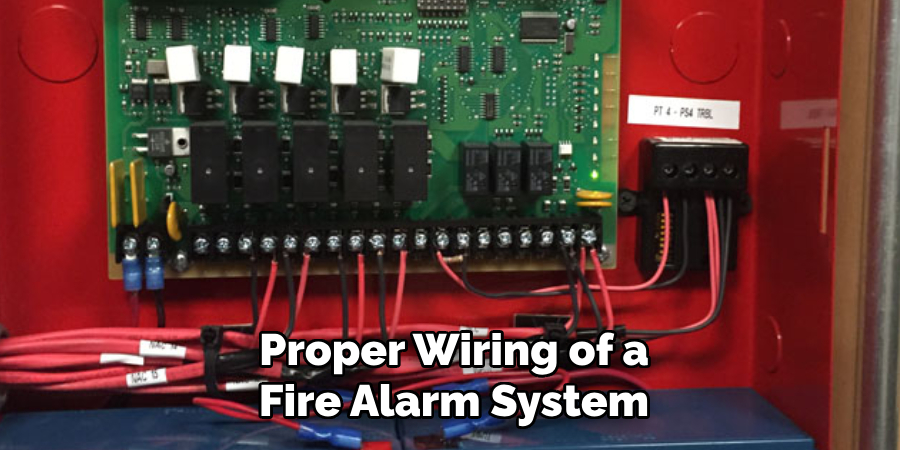
1) Not Following Local Codes and Regulations
It is crucial to follow all local codes and regulations when installing a fire alarm system. These codes and regulations are put in place for the safety of occupants and must be followed to ensure proper installation.
2) Using Incorrect Wire Sizes
Using incorrect wire sizes can result in malfunctions or false alarms within the system. Always use the appropriate wire size designated by the manufacturer for each component of the fire alarm system.
3) Overloading Circuits
Make sure to evenly distribute devices throughout the system and avoid overloading circuits. Overloaded circuits can cause malfunctions or even start a fire.
4) Using Incorrect Wire Connections
Properly connecting wires according to their designated zones is crucial for the correct functioning of the fire alarm system. Always refer to manufacturer’s instructions and properly label all connections.
5) Not Labeling Wires and Connections
Labeling wires and connections is crucial for installation, maintenance, and troubleshooting processes. Failure to label them can result in confusion and errors during these processes. While it may take extra time, labeling wires and connections is a crucial step that should not be skipped.
6) Not Testing the System
After completing the wiring process, it is essential to test the system thoroughly. Failure to do so can result in malfunctions or false alarms during an emergency. So, be sure to follow all testing procedures and ensure the system functions correctly.
7) Not Conducting Regular Maintenance
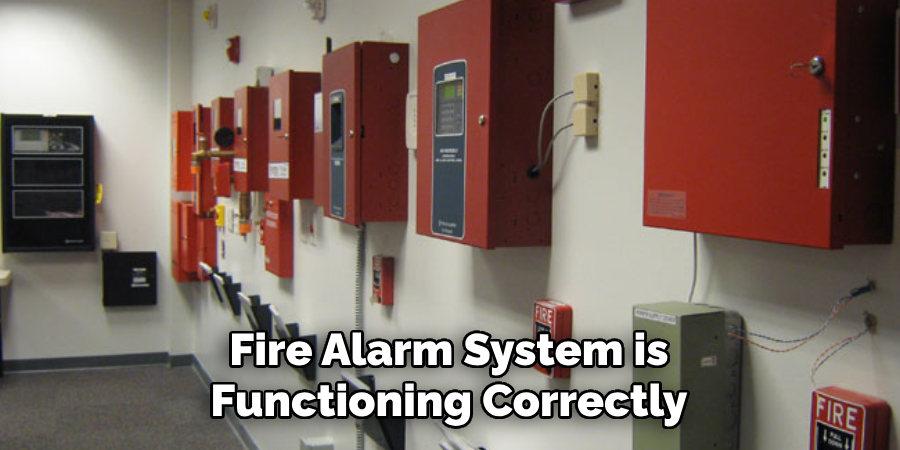
Regular maintenance checks are necessary to ensure the fire alarm system is functioning correctly. Skipping these checks can result in undetected issues that may affect the system’s performance during an emergency. So, make sure to conduct regular maintenance as recommended by the manufacturer.
8) Not Keeping Detailed Records
Keeping detailed records of all installations, tests, and maintenance checks is essential for the proper functioning of a fire alarm system. In case of any necessary repairs or replacements, these records can provide valuable information and guidance. So be sure to keep detailed records at all times.
By avoiding these eight things, you can ensure that your fire alarm system is properly installed and maintained, providing safety and protection for occupants in a building. Remember to always prioritize safety, follow the manufacturer’s instructions, and consult a professional if needed.
With proper installation and maintenance, your fire alarm system will offer peace of mind and potentially save lives. So be sure to avoid these things and properly wire your fire alarm system today!
8 Additional Tips for Properly Wiring a Fire Alarm System
In addition to following the steps and avoiding certain things while wiring a fire alarm system, here are eight additional tips to ensure proper installation:
1) Use Quality Components
Using quality components from reputable manufacturers is crucial for a reliable and effective fire alarm system. Do thorough research and invest in components that meet industry standards. Remember to check regularly for updates or recalls from the manufacturer.
2) Plan Ahead
Proper planning is crucial for a successful fire alarm system installation. Make sure to have a detailed plan in place before beginning the wiring process and consult with professionals if needed. So, take the time to plan ahead and ensure all necessary components and tools are available.
3) Keep Safety in Mind
Safety should always be the top priority when installing a fire alarm system. Make sure to follow all safety protocols and use proper protective gear while working with electrical components. If you are unsure or uncomfortable with any aspect of the installation process, consult a professional.
4) Use Color-Coded Wires
Using color-coded wires can make the installation process easier and less confusing. Refer to the manufacturer’s instructions for designated wire colors, and always label wires as an extra precaution.
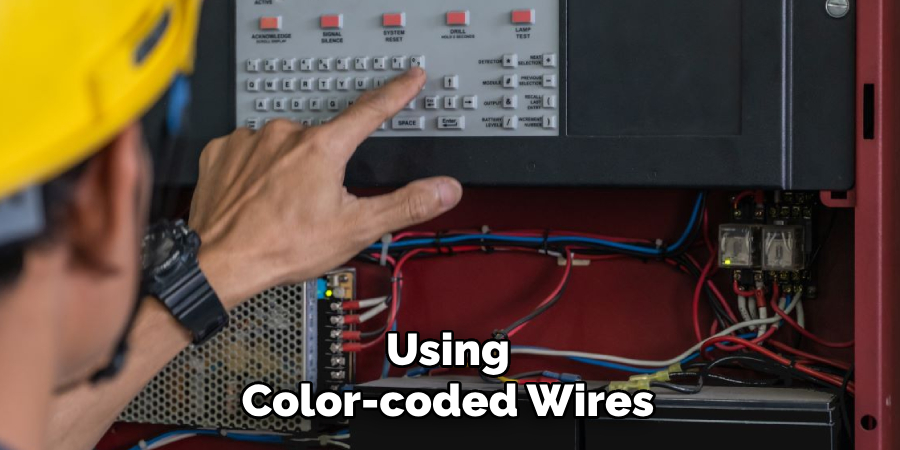
5) Keep Connections Tight
Properly securing connections is crucial for a fire alarm system to function correctly. Make sure all connections are tight and secure to avoid any malfunctions. While it may seem like a small detail, loose connections can cause major issues.
6) Consult Building Plans
Refer to building plans and diagrams when installing a fire alarm system. These plans can provide valuable information on the layout of the building and the proper placement of devices. And remember to always follow local codes and regulations as well.
7) Test Regularly
In addition to testing the system after installation, it is crucial to conduct regular tests and maintenance checks. This ensures that the system is functioning correctly and can prevent any potential issues during an emergency.
8) Train Occupants
Lastly, make sure to train occupants on how to properly use the fire alarm system. This can include knowing where pull stations are located and what actions to take in case of a fire. It is essential for occupants to be familiar with the system so they can respond appropriately in an emergency situation.
By following these additional tips on how to wire fire alarm system, you can ensure a properly installed and functioning fire alarm system that provides safety and protection for all occupants. Remember to always prioritize safety and consult professionals if needed.
And with proper installation, your fire alarm system will offer peace of mind and potentially save lives. So be sure to keep these tips in mind when wiring a fire alarm system.
Frequently Asked Questions
Why is It Essential to Avoid Using Incorrect Wire Connections?
Incorrect wire connections can lead to malfunctions or failures in the fire alarm system, potentially putting occupants at risk during an emergency. As such, it is crucial to carefully follow the manufacturer’s instructions and properly label all connections.
What are the Consequences of Not Labeling Wires and Connections?
Not labeling wires and connections can result in confusion and errors during installation, maintenance, and troubleshooting processes. This can lead to delays or incorrect wiring, affecting the system’s functionality.
How Often Should a Fire Alarm System Be Tested?
A fire alarm system should be tested after installation and regularly thereafter, as recommended by the manufacturer. This can vary depending on the type of system, but it is typically recommended to test at least once a month.
Additionally, regular maintenance checks should be conducted to ensure the system is functioning correctly. It is also important to run tests after any modifications or repairs to the system.
Can a Fire Alarm System be Installed by an Untrained Individual?
No, it is not recommended for an untrained individual to install a fire alarm system. This task should be left to trained professionals who have the necessary knowledge and experience to ensure a proper installation. This will also help avoid potential safety hazards and ensure compliance with local codes and regulations. So, always consult a professional for the proper installation of a fire alarm system.
Is it Necessary to Consult a Professional for Fire Alarm System Installation?
While it is possible to install a fire alarm system yourself, it is highly recommended that you consult a professional for proper installation. This ensures that all safety protocols and building codes are followed and that the system is correctly wired for optimal functionality.
Additionally, professionals have the knowledge and experience to troubleshoot any issues that may arise during installation.
Conclusion
Properly wiring a fire alarm system is crucial for the safety and protection of occupants in a building. By following these tips on how to wire fire alarm system, you can ensure a successful installation and functioning system.
Remember to prioritize safety, use quality components, and consult professionals when needed. And with a properly installed and maintained fire alarm system, you can have peace of mind knowing that your building is equipped to handle any emergency.
About
Safety Fic is a distinguished figure in the world of Diy design, with a decade of expertise creating innovative and sustainable Diy solutions. His professional focus lies in merging traditional craftsmanship with modern manufacturing techniques, fostering designs that are both practical and environmentally conscious. As the author of diy, Safety Fic delves into the art and science of Safety Fic-making, inspiring artisans and industry professionals alike.
Education RMIT University
(Melbourne, Australia) Associate Degree in Design (Safety Fic) Focus on sustainable design, industry-driven projects, and practical craftsmanship. Gained hands-on experience with traditional and digital manufacturing tools, such as CAD and CNC software.
Nottingham Trent University
(United Kingdom) Bachelor’s in diyfastly.com and Product Design (Honors) Specialized in product design with a focus on blending creativity with production techniques. Participated in industry projects, working with companies like John Lewis and Vitsoe to gain real-world insights.
Publications and Impact
In diy, Safety Fic his insights on indoor design processes, materials, and strategies for efficient production. His writing bridges the gap between artisan knowledge and modern industry needs, making it a must-read for both budding designers and seasoned professionals.
